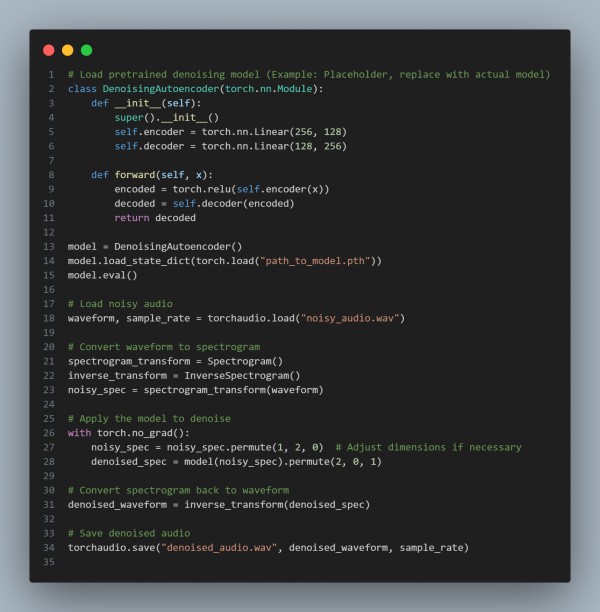You can refer to the code below which denoises an audio signal using a deep-learning approach:

In the above code, we are using a pre-trained Model that replaces the DenoisingAutoencoder with a suitable pre-trained denoising model, Spectrogram Transformations that convert the waveform to a spectrogram for processing and back to the waveform post-denoising, and Inference that uses a torch.no_grad() to perform inference efficiently.
Hence, this pipeline handles noisy audio with a deep learning-based denoising approach.
 REGISTER FOR FREE WEBINAR
X
REGISTER FOR FREE WEBINAR
X
 Thank you for registering
Join Edureka Meetup community for 100+ Free Webinars each month
JOIN MEETUP GROUP
Thank you for registering
Join Edureka Meetup community for 100+ Free Webinars each month
JOIN MEETUP GROUP